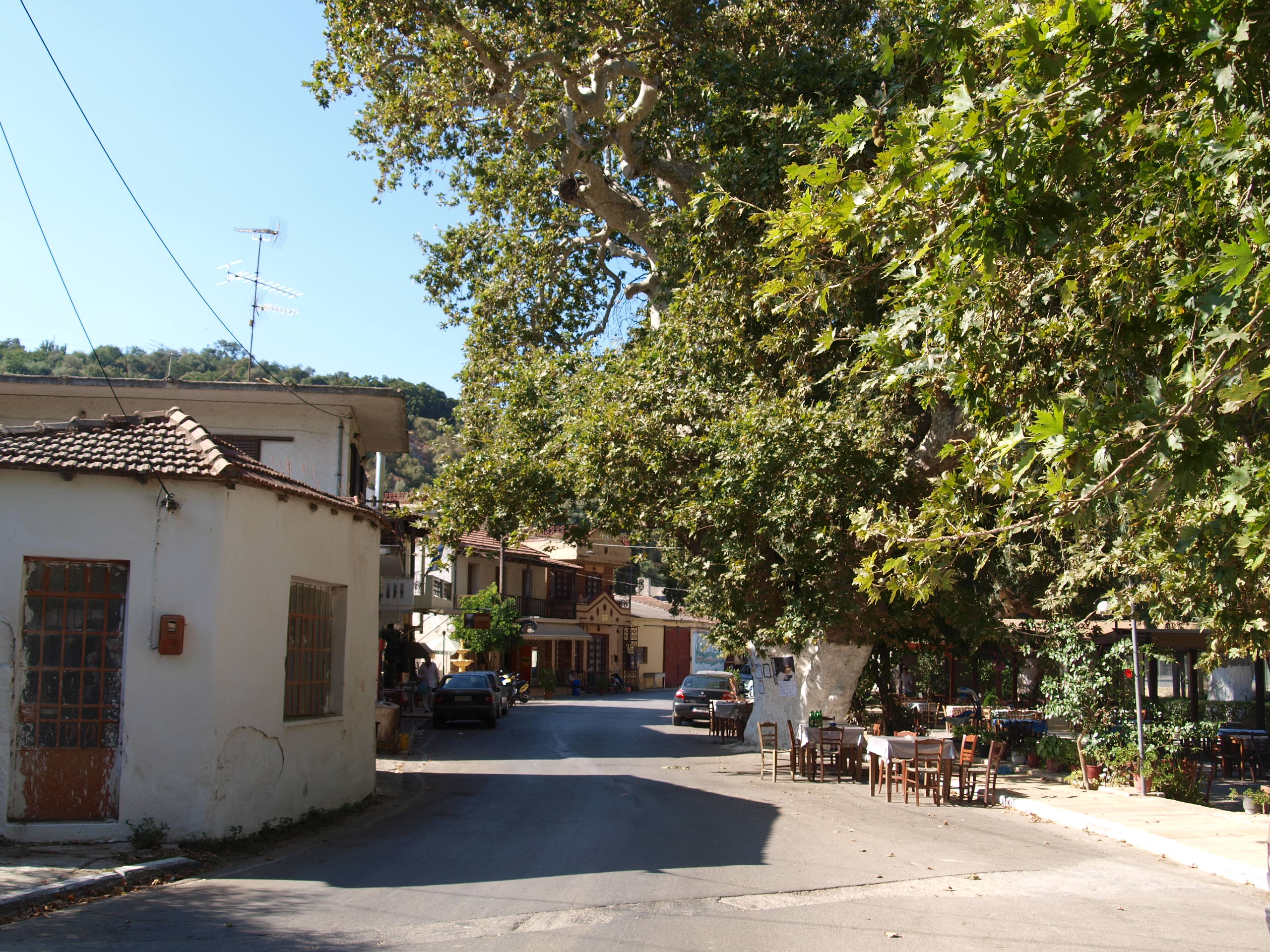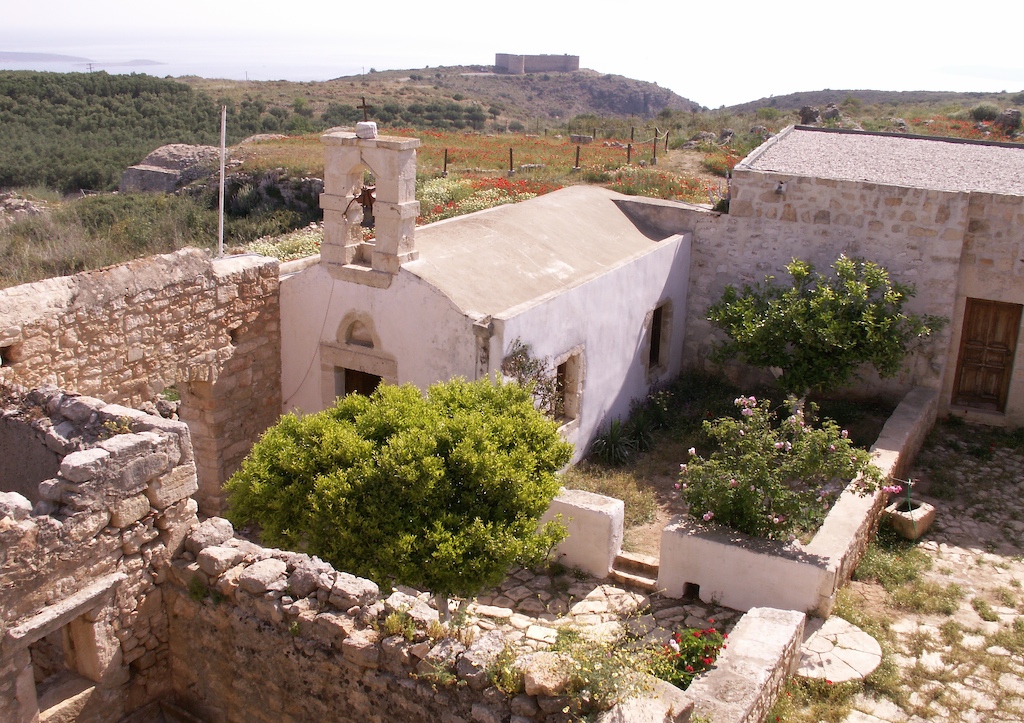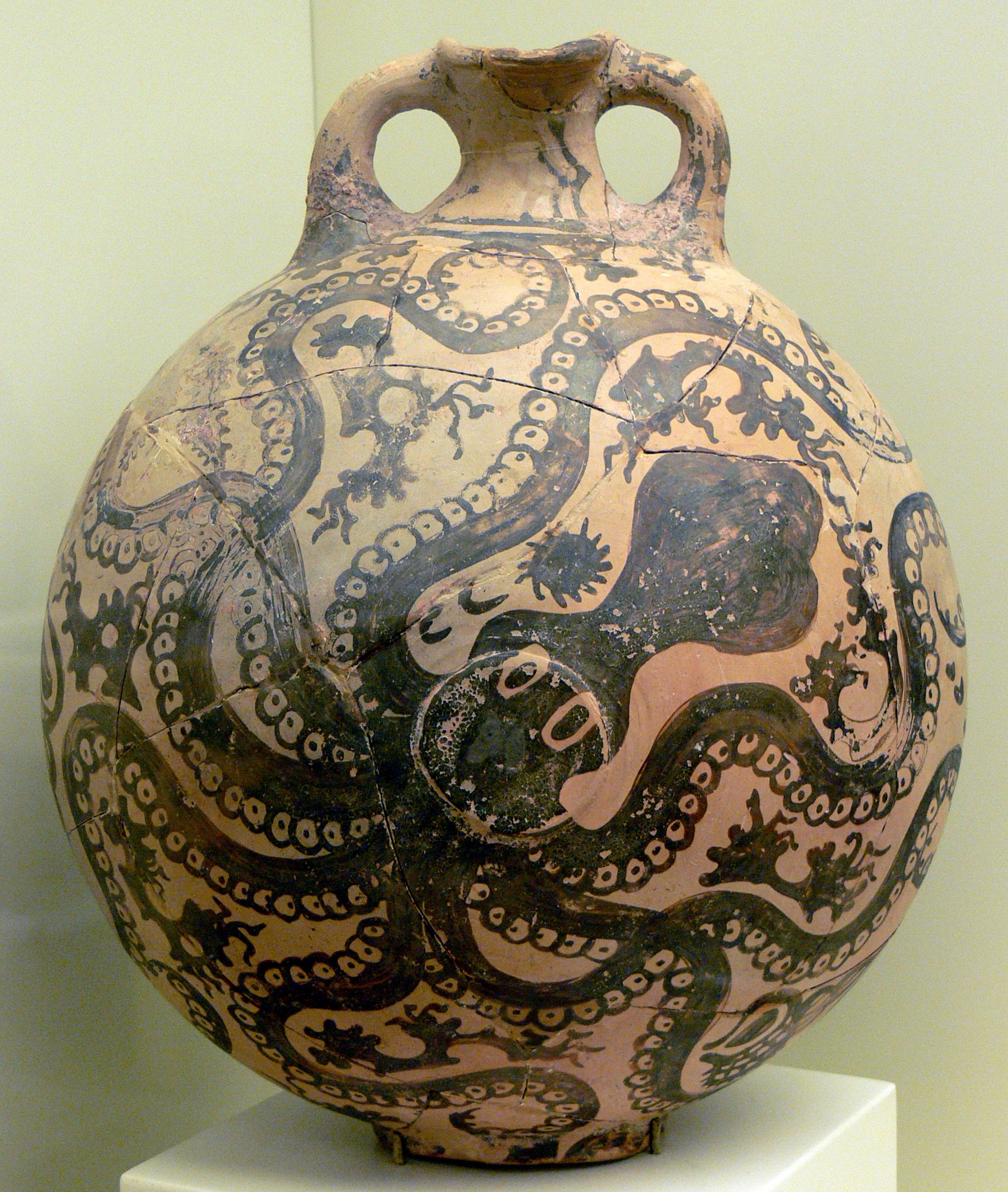|
Stilos (archaeological Site)
Stylos is an archaeological site of an ancient Minoan The Minoan civilization was a Bronze Age culture which was centered on the island of Crete. Known for its monumental architecture and Minoan art, energetic art, it is often regarded as the first civilization in Europe. The ruins of the Minoan pa ... settlement and cemetery near the modern village of Stylos on the Greece, Greek island of Crete. ''Stylos'' means "column" in Greek language, Greek. Stylos is near the important archaeological site of Aptera, Greece, Aptera in Chania (regional unit), Chania regional unit. The site was first excavated by N. Platon and C. Davaras. A potter's kiln, a building with four rooms and a Minoan pottery, Late Minoan tholos tomb have been excavated. References * Swindale, Ia"Stylos"Retrieved 12 May 2013. External links * http://www.minoancrete.com/stylos.htm - Excellent photographs and video of the site. Chania (regional unit) Ancient Greek archaeological sites in Crete Minoan sites ... [...More Info...] [...Related Items...] OR: [Wikipedia] [Google] [Baidu] |
Minoan Civilization
The Minoan civilization was a Bronze Age culture which was centered on the island of Crete. Known for its monumental architecture and energetic art, it is often regarded as the first civilization in Europe. The ruins of the Minoan palaces at Knossos and Phaistos are popular tourist attractions. The Minoan civilization developed from the local Neolithic culture around 3100BC, with complex urban settlements beginning around 2000BC. After 1450BC, they came under the cultural and perhaps political domination of the mainland Mycenaean Greeks, forming a hybrid culture which lasted until around 1100BC. Minoan art included elaborately decorated pottery, seals, figurines, and colorful frescoes. Typical subjects include nature and ritual. Minoan art is often described as having a fantastical or ecstatic quality, with figures rendered in a manner suggesting motion. Little is known about the structure of Minoan society. Minoan art contains no unambiguous depiction of a monarch, and t ... [...More Info...] [...Related Items...] OR: [Wikipedia] [Google] [Baidu] |
Stilos
Stylos or Stilos () is a village and part of the Apokoronas municipal unit in the Chania (regional unit), Chania regional unit of the Greek island of Crete. The Greek etymology of the name of the village is 'column' or 'pillar'. No existing topographical or surviving architectural feature could account for this naming. In the Minoan time a large and important Minoan settlement (mentioned in Linear B as a-pa-ta-wa) was located here. When it declined, its name was given to the city of Aptera (Greece), Aptera that was built approximately 1.5 km away from Stylos. The village is laid out to the south side of the road from Megala Chorafia to Neo Chorio, Crete, Neo Chorio. The two-aisled Byzantine Church of St. John the Theologian stands by the village road, as does a modern domed church. Next to the Church of St. John, the fossilized remains of the extinct Sirenia sea mammal Metaxytherium medium, can be seen. The Etanap (Greek ΕΤΑΝΑΠ Α.Ε. - Επιτραπέζιο Ν� ... [...More Info...] [...Related Items...] OR: [Wikipedia] [Google] [Baidu] |
Greece
Greece, officially the Hellenic Republic, is a country in Southeast Europe. Located on the southern tip of the Balkan peninsula, it shares land borders with Albania to the northwest, North Macedonia and Bulgaria to the north, and Turkey to the east. The Aegean Sea lies to the east of the Geography of Greece, mainland, the Ionian Sea to the west, and the Sea of Crete and the Mediterranean Sea to the south. Greece has the longest coastline on the Mediterranean Basin, spanning List of islands of Greece, thousands of islands and nine Geographic regions of Greece, traditional geographic regions. It has a population of over 10 million. Athens is the nation's capital and List of cities and towns in Greece, largest city, followed by Thessaloniki and Patras. Greece is considered the cradle of Western culture, Western civilisation and the birthplace of Athenian democracy, democracy, Western philosophy, Western literature, historiography, political science, major History of science in cl ... [...More Info...] [...Related Items...] OR: [Wikipedia] [Google] [Baidu] |
Crete
Crete ( ; , Modern Greek, Modern: , Ancient Greek, Ancient: ) is the largest and most populous of the Greek islands, the List of islands by area, 88th largest island in the world and the List of islands in the Mediterranean#By area, fifth largest island in the Mediterranean Sea, after Sicily, Sardinia, Cyprus, and Corsica. Crete is located about south of the Peloponnese, and about southwest of Anatolia. Crete has an area of and a coastline of 1,046 km (650 mi). It bounds the southern border of the Aegean Sea, with the Sea of Crete (or North Cretan Sea) to the north and the Libyan Sea (or South Cretan Sea) to the south. Crete covers 260 km from west to east but is narrow from north to south, spanning three longitudes but only half a latitude. Crete and a number of islands and islets that surround it constitute the Region of Crete (), which is the southernmost of the 13 Modern regions of Greece, top-level administrative units of Greece, and the fifth most popu ... [...More Info...] [...Related Items...] OR: [Wikipedia] [Google] [Baidu] |
Greek Language
Greek (, ; , ) is an Indo-European languages, Indo-European language, constituting an independent Hellenic languages, Hellenic branch within the Indo-European language family. It is native to Greece, Cyprus, Italy (in Calabria and Salento), southern Albania, and other regions of the Balkans, Caucasus, the Black Sea coast, Asia Minor, and the Eastern Mediterranean. It has the list of languages by first written accounts, longest documented history of any Indo-European language, spanning at least 3,400 years of written records. Its writing system is the Greek alphabet, which has been used for approximately 2,800 years; previously, Greek was recorded in writing systems such as Linear B and the Cypriot syllabary. The Greek language holds a very important place in the history of the Western world. Beginning with the epics of Homer, ancient Greek literature includes many works of lasting importance in the European canon. Greek is also the language in which many of the foundational texts ... [...More Info...] [...Related Items...] OR: [Wikipedia] [Google] [Baidu] |
Aptera, Greece
Aptera ( or ) or Apteron was an ancient city, now an archaeological site in Kalives in western Crete, a kilometre inland from the southern shore of Souda Bay, about 13 km east of the city of Chania in the municipality of Chania. History It is mentioned (A-pa-ta-wa) in Linear B tablets from the 14th-13th centuries Before Christ, BC. With its highly fortunate geographical situation, the city-state was powerful from Minoan civilization, Minoan through Hellenistic times, when it gradually declined. However, the Minoan settlement of the Bronze Age was located about 1.5 km away from Aptera, at the place of the modern Stylos settlement. In Greek mythology, Aptera was the site of the legendary contest between the Siren (mythology), Sirens and the Muses, when after the victory of the Muses, the Sirens lost the feathers of their wings from their shoulders, and having thus become white, cast themselves into the sea. The name of the city literally means "without wings", and the ... [...More Info...] [...Related Items...] OR: [Wikipedia] [Google] [Baidu] |
Chania (regional Unit)
Chania (), also spelled Hania, is one of the four regional units of Crete; it covers the westernmost quarter of the island. Its capital is the city of Chania. Chania borders only one other regional unit: that of Rethymno to the east. The western part of Crete is bounded to the north by the Cretan Sea (part of the Aegean Sea) and to the west and south by the Mediterranean Sea and Libyan Sea. The regional unit also includes the southernmost island of Europe, Gavdos. Geography Chania regional unit, often informally termed 'Western Crete', is a part of the island which includes the capital Chania, and the districts of Platanias and Apokoronas in the north, and Sfakia and Selino in the far south west corner. Other towns in the Chania prefecture include Hora Sfakion, Kissamos, Palaiochora, Maleme, Vryses, Vamos, Georgioupolis and Kalives. The natural park of Samariá Gorge, a tourist attraction and a refuge for the rare Cretan wild goat or '' kri-kri'', is in the South ... [...More Info...] [...Related Items...] OR: [Wikipedia] [Google] [Baidu] |
Kiln
A kiln is a thermally insulated chamber, a type of oven, that produces temperatures sufficient to complete some process, such as hardening, drying, or Chemical Changes, chemical changes. Kilns have been used for millennia to turn objects made from clay into pottery, Tile, tiles and bricks. Various industries use rotary kilns for pyroprocessing (to calcinate ores, such as limestone to Lime (material), lime for Cement kiln, cement) and to transform many other materials. Etymology According to the Oxford English Dictionary, kiln was derived from the words cyline, cylene, cyln(e) in Old English, in turn derived from Latin ''culina'' ('kitchen'). In Middle English, the word is attested as kulne, kyllne, kilne, kiln, kylle, kyll, kil, kill, keele, kiele. In Greek the word ''καίειν, kaiein'', means 'to burn'. Pronunciation The word 'kiln' was originally pronounced 'kil' with the 'n' silent, as is referenced in ''Webster's Dictionary of 1828'' and in ''English Words as Sp ... [...More Info...] [...Related Items...] OR: [Wikipedia] [Google] [Baidu] |
Minoan Pottery
The Minoan civilization produced a wide variety of richly decorated Minoan pottery. Its restless sequence of quirky maturing artistic styles reveals something of Minoan patrons' pleasure in novelty while they assist archaeologists in assigning relative dates to the Archaeology, strata of their sites. Pots that contained oils and ointments, exported from 18th century BC Crete, have been found at sites through the Aegean Sea, Aegean islands and mainland Greece, in Cyprus, along coastal Syria and in Egypt, showing the wide trading contacts of the Minoans. The pottery includes vases, figurines, models of buildings, and burial urns called larnax, larnakes. Several pottery shapes, especially the rhyton cup, were also produced in soft stones such as steatite, but there was almost no overlap with metal vessels. The finest achievements came in the Middle Minoan period, with the palace pottery called Kamares ware, and the Minoan chronology, Late Minoan all-over patterned "Marine Style" and ... [...More Info...] [...Related Items...] OR: [Wikipedia] [Google] [Baidu] |
Tholos Tomb
A beehive tomb, also known as a tholos tomb (plural tholoi; from , ''tholotoi táphoi'', "domed tomb(s)"), is a burial structure characterized by its false dome created by corbelling, the superposition of successively smaller rings of mudbricks or, more often, stones. The resulting structure resembles a beehive, hence the traditional English name. Tholoi were used for burial in several cultures in the Mediterranean and West Asia, but in some cases they were used for different purposes such as homes (Cyprus), rituals (Bulgaria, Syria), and even fortification (Spain, Sardinia). Although Max Mallowan used the same name for the circular houses belonging to the Neolithic culture of Tell Halaf (Iraq, Syria and Turkey), there is no relationship between them. Greece In Greece, the vaulted ''tholoi'' are a monumental Late Bronze Age development. Their origin is a matter of considerable debate: were they inspired by the tholoi of Crete which were first used in the Early Minoan ... [...More Info...] [...Related Items...] OR: [Wikipedia] [Google] [Baidu] |
Ancient Greek Archaeological Sites In Crete
Ancient history is a time period from the beginning of writing and recorded human history through late antiquity. The span of recorded history is roughly 5,000 years, beginning with the development of Sumerian cuneiform script. Ancient history covers all continents inhabited by humans in the period 3000 BCAD 500, ending with the expansion of Islam in late antiquity. The three-age system periodises ancient history into the Stone Age, the Bronze Age, and the Iron Age, with recorded history generally considered to begin with the Bronze Age. The start and end of the three ages vary between world regions. In many regions the Bronze Age is generally considered to begin a few centuries prior to 3000 BC, while the end of the Iron Age varies from the early first millennium BC in some regions to the late first millennium AD in others. During the time period of ancient history, the world population was exponentially increasing due to the Neolithic Revolution, which was in full prog ... [...More Info...] [...Related Items...] OR: [Wikipedia] [Google] [Baidu] |







